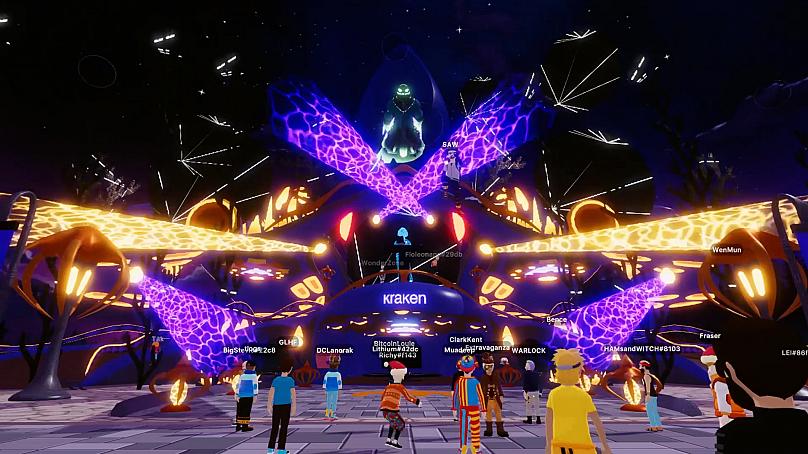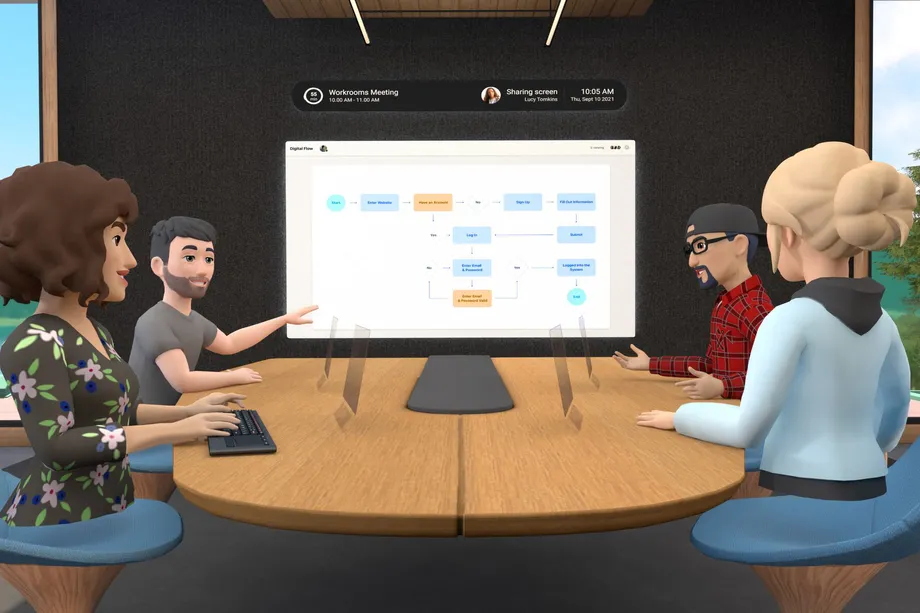Making the metaverse a place that is productive, where the metaverse for work is a powerful tool–that’s the challenge set out for metaverse architects. If you haven’t already processed the insights from our first Metaverse blog, we recommend you start there. For those who have, welcome back, and let’s look at how the metaverse can and will be leveraged for productivity and as a place to get work done.
Is Metaverse just VR?
We said in our first blog that metaverse is about more than just VR, AR, and mixed reality; it’s about the idea of immediacy, of being together in a place as things happen. With metaverse applications, the 2D dimensions of our productivity apps like Slack, Teams, and Zoom, grow a third dimension, giving the interactions that happen in these spaces room to breathe. This virtual reality space can be interacted with through a regular computer, a phone, or a tablet––but it should be said that a VR headset creates a sense of “being there” that can’t be matched by non-VR hardware.
So why do we care? Metaverse work takes the fragmentation of the workplace that we all experienced in 2020 through to today, and unifies our teams and our interactions with clients, suppliers, and customers by allowing us to be remote but work together. All of the things that we took for granted before the COVID-19 pandemic are possible here, from round-table team meetings to water cooler chats, to lunch time yoga to impromptu, rapid fire creative brainstorms.

Photo: Image shows an event inside the virtual, social world, Decentraland
When is the metaverse launching?
You might be surprised, but elements of the metaverse are already here. Blockchain-based NFT metaverse real estate, like The Sandbox, Decentraland, and Terra Worlds have already starting minting properties within their own virtual worlds, letting users create their own VR space that meets the needs of their own purposes. Meta, née Facebook, has launched their own meta world, called Horizon, in an effort to keep users working inside the Facebook ecosystem. The missing piece right now is interoperability; most metaverse worlds don’t play nice with the others, and that’s something that’s going to have to change when the metaverse becomes more accessible to a wider audience.

Metaverse for work will bring us back together
Remote work has been a work-life balance blessing for some, and a work-life balance curse for others. The lack of presence with each other, the difficulty we’ve had in syncing up schedules and meeting times, the missing spontaneity…all of these are symptoms of the stark fact that video calls, dropbox folders, and shared documents can’t compare to the things we’ve lost.
Metaverse puts us in a space with each other. It alleviates the stress we feel being on video––frequently called Zoom Fatigue. It lets us contextualize information by laying documents out on a desk, or on the wall, or transcribed to a virtual whiteboard.
It’s going to be easier to keep track of things going on in the metaverse as well; metaverse applications can record the telemetry of everything that happens inside them––that means that audio, video, and even what you type out should be saveable and retrievable for future playback. One cool feature: spatial audio lets sound be produced from the location of each source. That means that people can achieve some privacy just by stepping away from the group.

Photo: A screenshot of Facebook’s new Workrooms virtual reality remote collaboration product. Facebook
Beyond Collaboration
Metaverse spaces bring us together, but not just for work, but for education. Just as the seminar evolved into the webinar, the webinar is evolving into the “metanar”. Teaching and instruction gets a serious upgrade with metaverse technology: groups can gather to work together, flow charts can take on new life and dimensions that spread around the room, and teachers will never run out of whiteboard space again, with an infinite supply of writing room just one click away.
We’re already consulting with clients across Canada on how to beat the rush to the metaverse the smart way, through careful evaluation of what each business needs and tailoring metaverse solutions to them individually.
If you’re ready to learn how the metaverse can expand your digital horizons, contact us through our online form or call us today.




